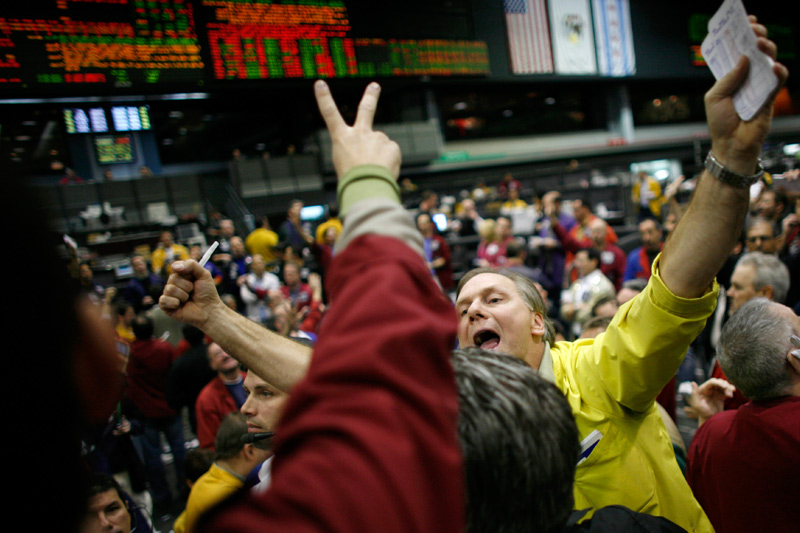By Christoph Steitz
FRANKFURT (Reuters) - Germany's offshore wind parks, once seen as only for brave investors because of high costs and operational risks, are attracting fresh money after laws were passed to ensure ambitious renewables targets are met.
British investment firm Laidlaw Capital bought its second German offshore wind park project two weeks ago, following a landmark German offshore wind acquisition by Canadian energy group Northland Power (TO:NPI).
Chancellor Angela Merkel's government has made offshore wind a priority in the country's "Energiewende", which moves Germany towards alternative energy sources after a decision to phase out nuclear power by 2022.
Germany needs at least 20 billion euros (16 billion pounds) to achieve its aim of expanding offshore wind capacity to more than 10 times its present capacity by 2020. Attracting new investors is crucial to help power producers to shoulder the cost.
As part of the country's new renewable law, investors can now look forward to guaranteed feed-in tariffs of 19.4 euro cents per kilowatt hour (kWh) over a period of eight years for offshore, better returns than for solar and onshore wind power.
"We've got relatively clear conditions for projects until 2020. Many will use this opportunity," said Holger Kraft, partner at law firm CMS Hasche Sigle, which advises investors including Laidlaw on offshore wind park transactions.
"The appetite has picked up markedly," he added.
RISKS HARD TO QUANTIFY
Unlike onshore wind farms, where risks can be quantified after decades of use, offshore wind is a relatively new sector and there is a lack of evidence to judge the long-term impact from storms.
Standing as tall as 200 metres, offshore wind turbines are built to withstand stronger winds at sea, making them bigger, more robust and more efficient than their onshore rivals.
However, risks include the construction process at sea, with potential delays as offshore turbines are usually erected during the summer months when waters are relatively calm.
In addition, outages caused by low winds as well as broken components such as rotor blades can result in hundred of millions of euros of losses, depending on the size of the park.
Those uncertainties are enough to deter some investors.
"What's the crisis management in case of damage?" said Armin Sandhoevel, chief investment officer for infrastructure equity at Allianz Global Investors (DE:ALVG).
"What happens if there is an accident at an offshore wind park? Too many of those questions are still unanswered."
JUICY RETURNS
Most upfront financing for offshore wind parks usually comes from power producers, but the high price tag of about a billion euros per park as well as tight budget restraints in the crisis-ridden utility sector mean outside money is crucial.
Profits at Germany's top utilities, E.ON (DE:EONGn) and RWE (DE:RWEG), have plunged due to a prolonged period of weak energy demand and a surge in competing renewable energy sources, causing massive writedowns.
An environment of low interest rates has however encouraged foreign power groups, infrastructure funds and institutional and state-backed investors to step in.
They are hungry for a share of the guaranteed annual returns of about nine percent once the parks are operational after the initial heavy investment.
Northland Power's purchase of a majority stake in three offshore park projects held by RWE earlier this month, with total project costs of up to 3.5 billion euros, underlined the sector's growing appeal.
"For Northland, Germany is an attractive market given that offshore wind development is a key feature of the country's 'Energiewende' programme," a spokesman for the group said.
CLOUDS LIFTING
The new renewables law in Germany provides more clarity about annual expansion targets and the level of feed-in tariffs.
Simultaneously, network connections for about 7.7 GW of offshore capacity are to be built by the end of the decade, removing uncertainty over whether there will be sufficient lines to connect parks to the onshore power grid.
Still, risks and prices for the technology will have to fall further for more deep-pocketed local players to join the fray.
MEAG, the investment management unit of reinsurer Munich Re (DE:MUVGn), has so far only invested in onshore plants, where it has spent a few hundred million euros.
Constraints on offshore output are a worry for MEAG.
"We don't expect parks to run 8,760 hours per year, but it shouldn't be just half of it either," said Robert Pottmann, head of renewable energy and new technologies at MEAG, also citing the relatively high costs for offshore wind power production.
Costs stand at about 145 euros per megawatt hour (MWh), compared with 81 euros/MWh for onshore wind and 138 euros/MWh for solar, according to Siemens (DE:SIEGn), which is the world's No.4 maker of wind turbines.
This is expected to drop to 95 euros/MWh by 2025, thanks to falling turbine prices, increasing efficiency and better quality of components, less than the 100 euro/MWh seen for solar.
In the end, falling costs and a stable regulatory environment could be the decisive factors that persuade risk-averse players to enter the sector.
"Chances are good that we will be invested in offshore wind in 2020," MEAG's Pottmann said.
(Editing by Keith Weir)
